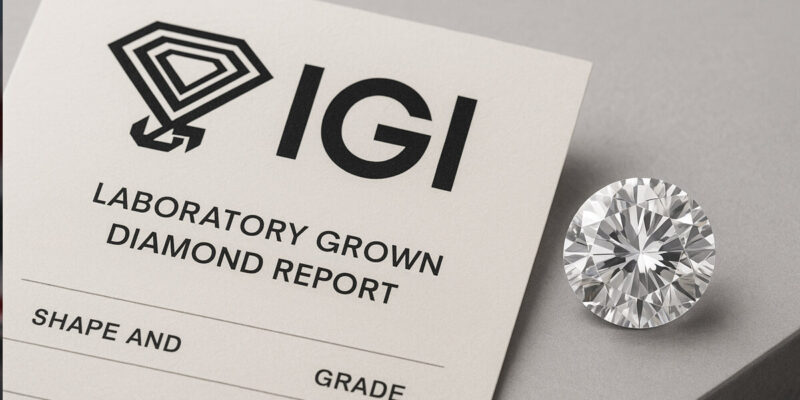The International Gemological Institute (IGI) has confirmed it will continue to apply the universally recognised 4Cs grading system – cut, colour, clarity and carat weight – to both natural and lab-grown diamonds. The announcement follows recent decisions by other major gemmological laboratories to modify or withdraw grading standards for synthetic stones.
IGI’s Position on Lab-Grown Diamond Grading
In a statement released earlier this week, IGI said it would “continue applying the universal 4Cs grading to all diamonds, whether natural or lab-grown,” reinforcing its long-standing policy of using the same evaluative framework regardless of a diamond’s origin. The Institute stated: “Since inception, IGI has remained steadfast in its mission as an independent, third-party authentication body — unbiased and free from external influence.”
The announcement comes at a time when other grading organisations are changing course. HRD Antwerp recently disclosed that it will no longer issue grading certificates for loose lab-grown diamonds, aiming to create a clear delineation between natural and synthetic stones. Separately, the Gemological Institute of America (GIA) has revised its reporting format for lab-grown diamonds, moving away from the 4Cs in favour of broader categorisations—now lab-grown diamonds will be labelled as either “premium” or “standard”.
Lab-Grown Diamonds’ Increasing Market Share
A significant portion of IGI’s grading activity is focused on lab-grown diamonds. According to the institute’s financial report for Q1 of this year, grading of lab-grown diamonds now accounts for 54% of its operations. By comparison, natural diamonds represent 16%. Overall revenue for the quarter increased by 10%, reaching INR 3 billion ($35.8 million), with certification of loose lab-grown diamonds up by 9%.
This shift in IGI’s certification volume reflects broader market developments in the production and distribution of lab-grown diamonds.
Industry Standards in Flux
The decision by some laboratories to retreat from traditional grading methodologies has prompted discussion throughout the trade. While some industry participants view simplified categorisations as a way to streamline communication, others are concerned about the loss of consistent benchmarks that have historically guided both consumer understanding and professional standards.
The 4Cs grading system remains a widely used method for assessing diamond quality, offering consistent metrics for comparing natural and lab-grown stones. Any shift away from these standards introduces potential inconsistencies in how stones are evaluated and presented at retail.
Disclosure and Transparency
While IGI applies the same grading criteria to all diamonds, it continues to disclose each stone’s origin clearly on its certificate. This distinction between treatment and disclosure allows jewellers to offer transparent documentation to customers without reducing the rigour of the underlying assessment.
Clear disclosure of diamond origin responds to ongoing industry considerations around transparency, particularly as lab-grown diamonds become more widely available.
Implications for Jewellers
For jewellers, IGI’s decision offers continuity in product documentation at a time when grading policies are diverging across the industry. The maintenance of the 4Cs for both natural and synthetic stones provides a consistent framework for evaluating and communicating diamond quality.




